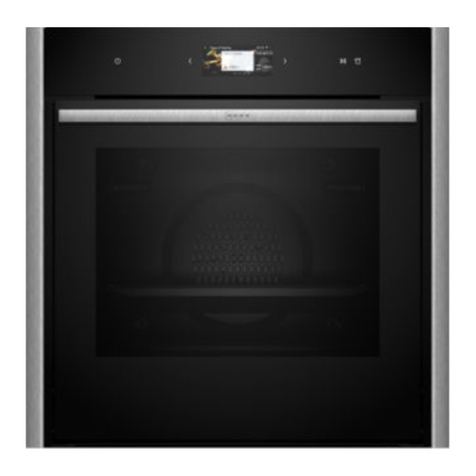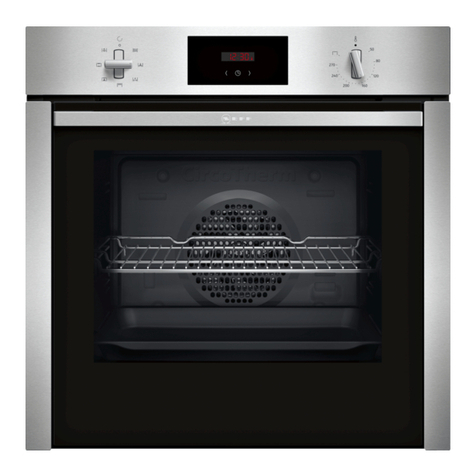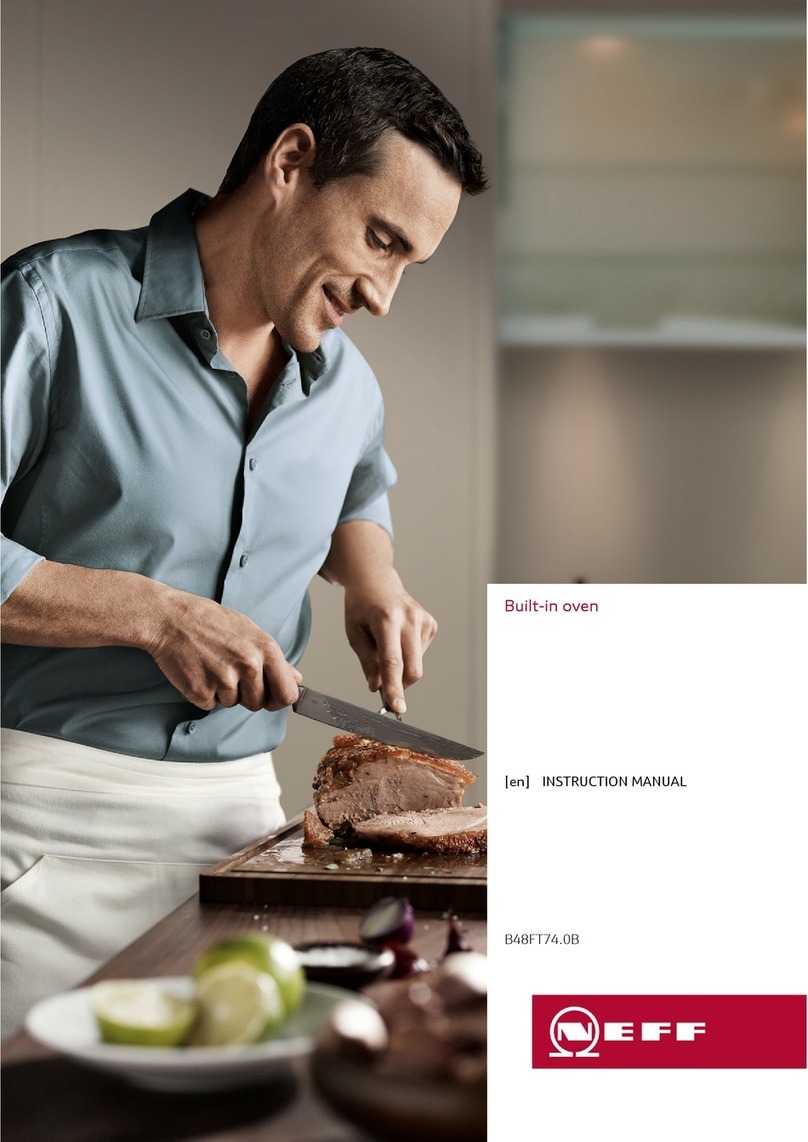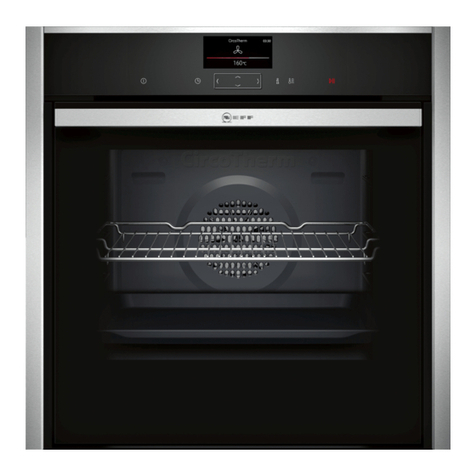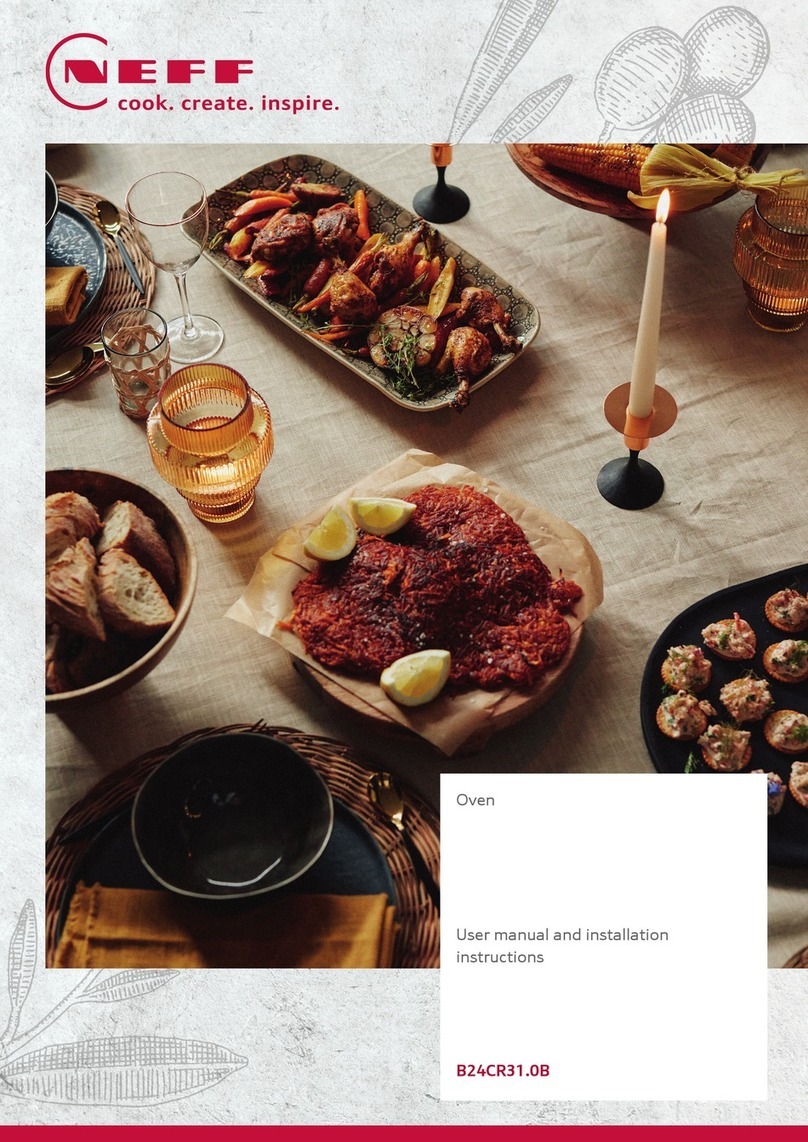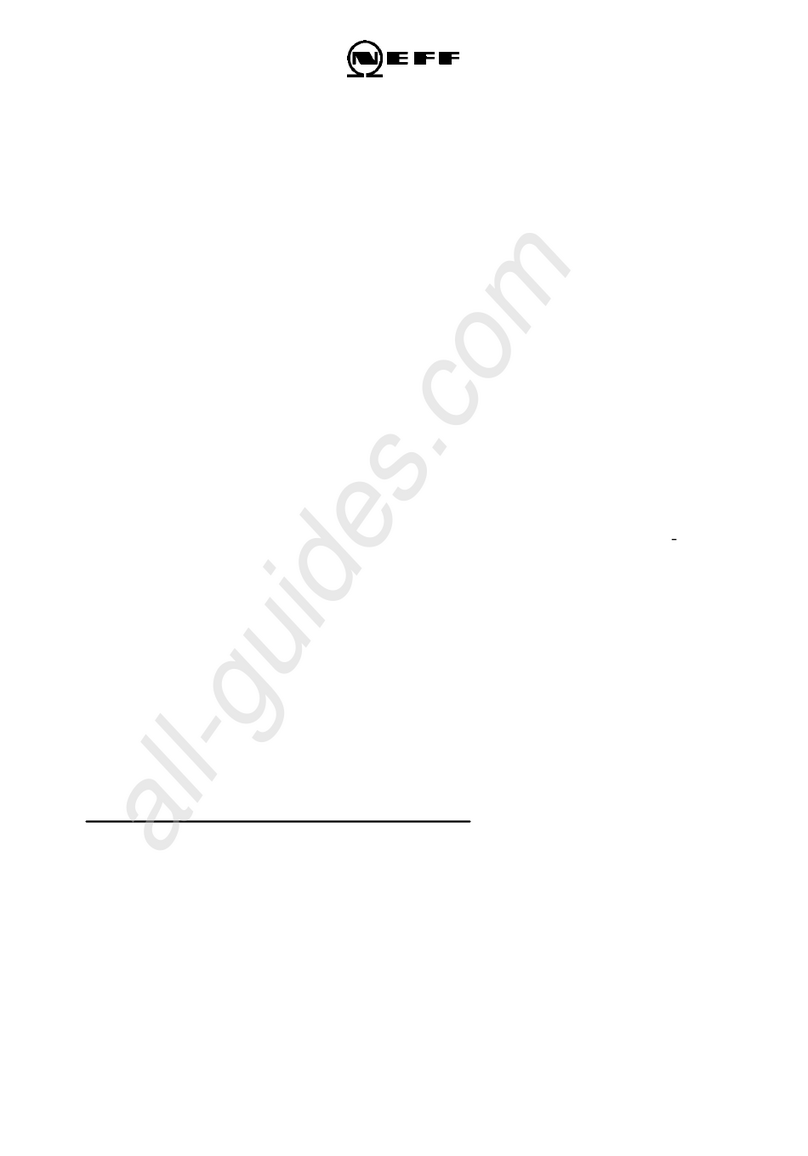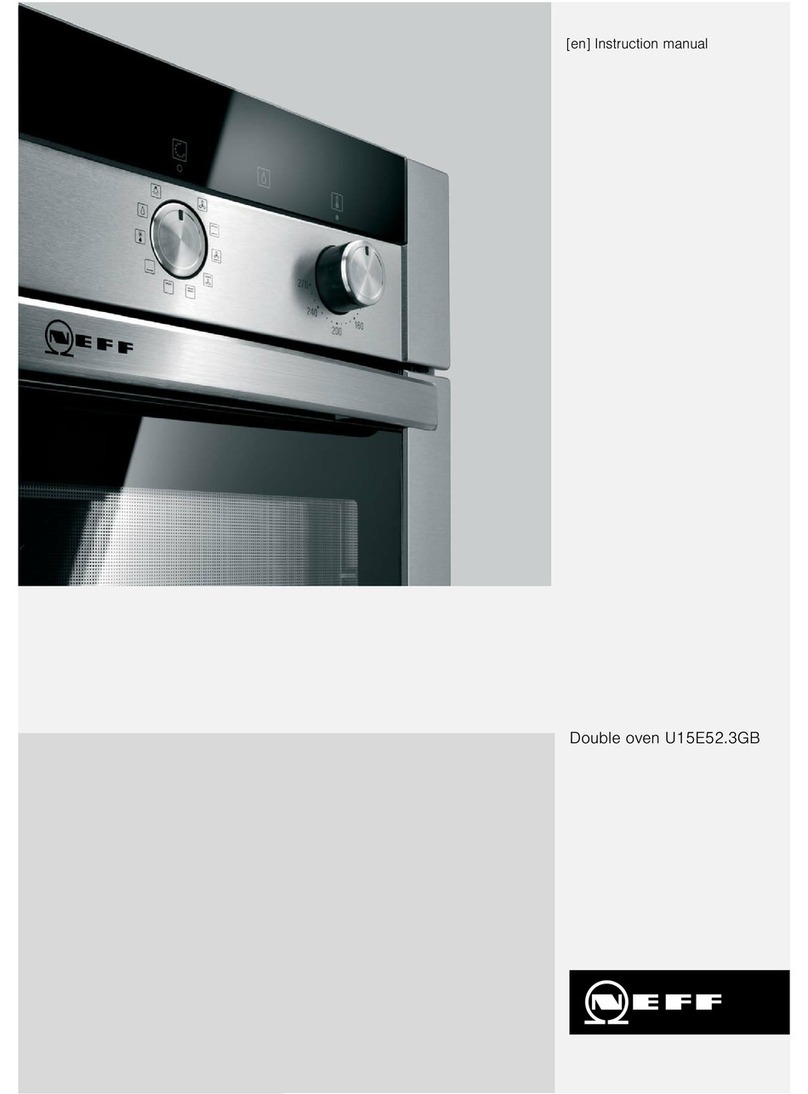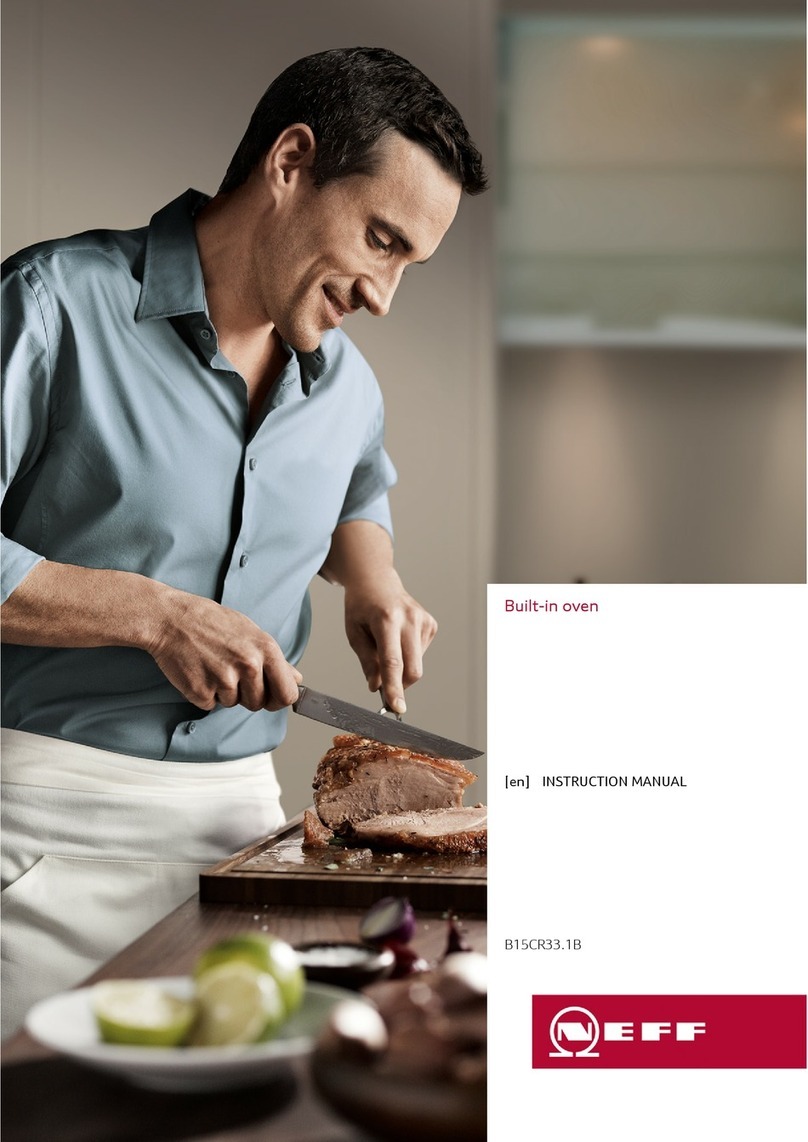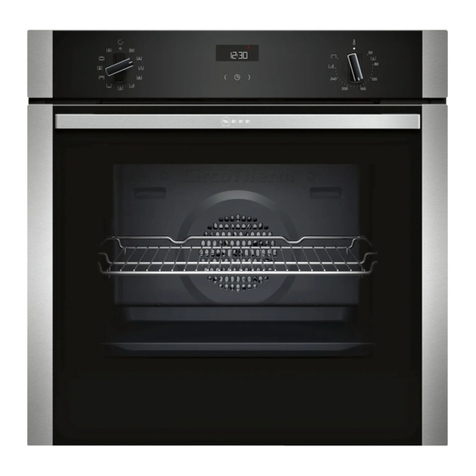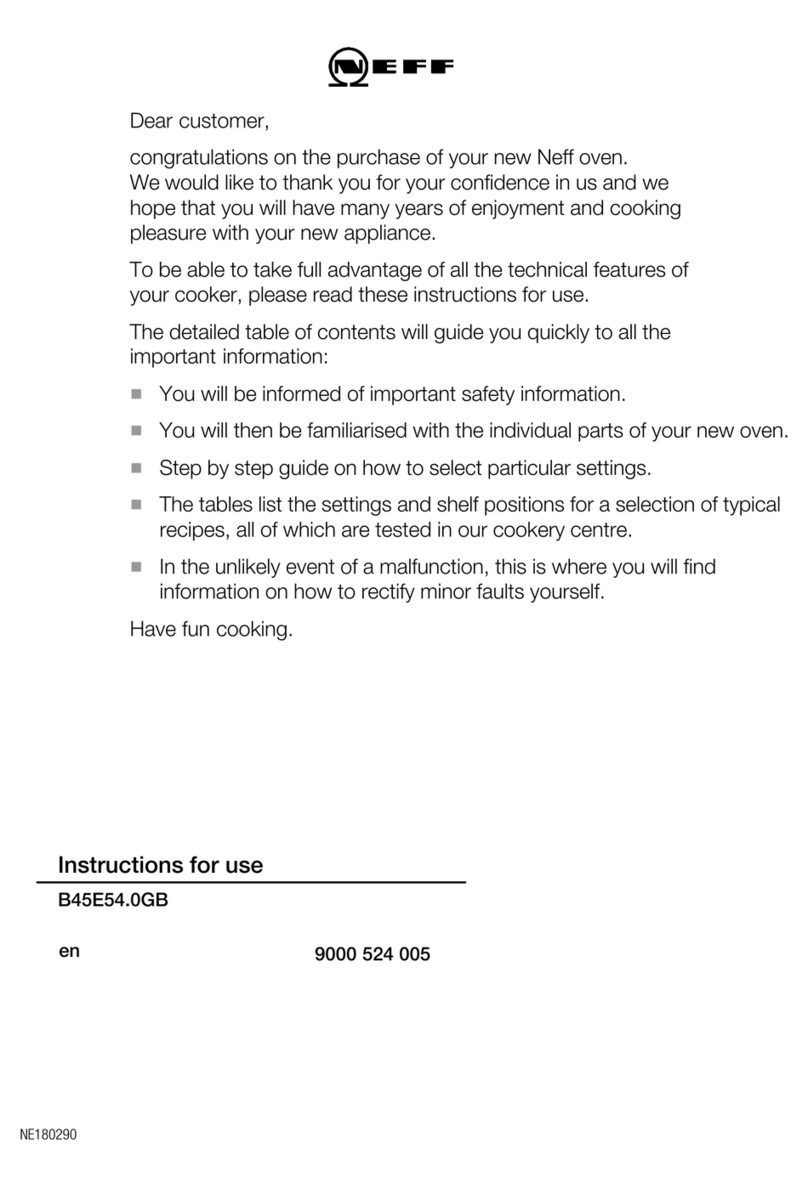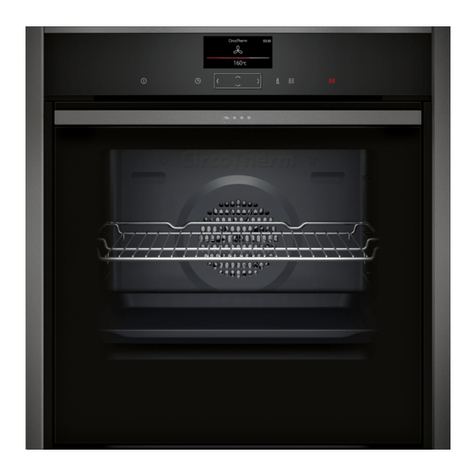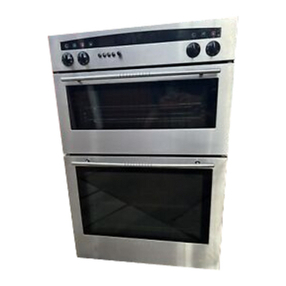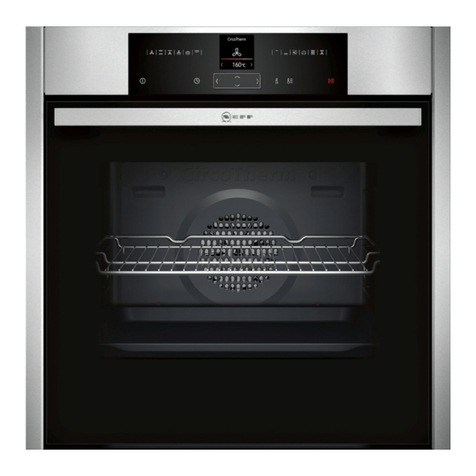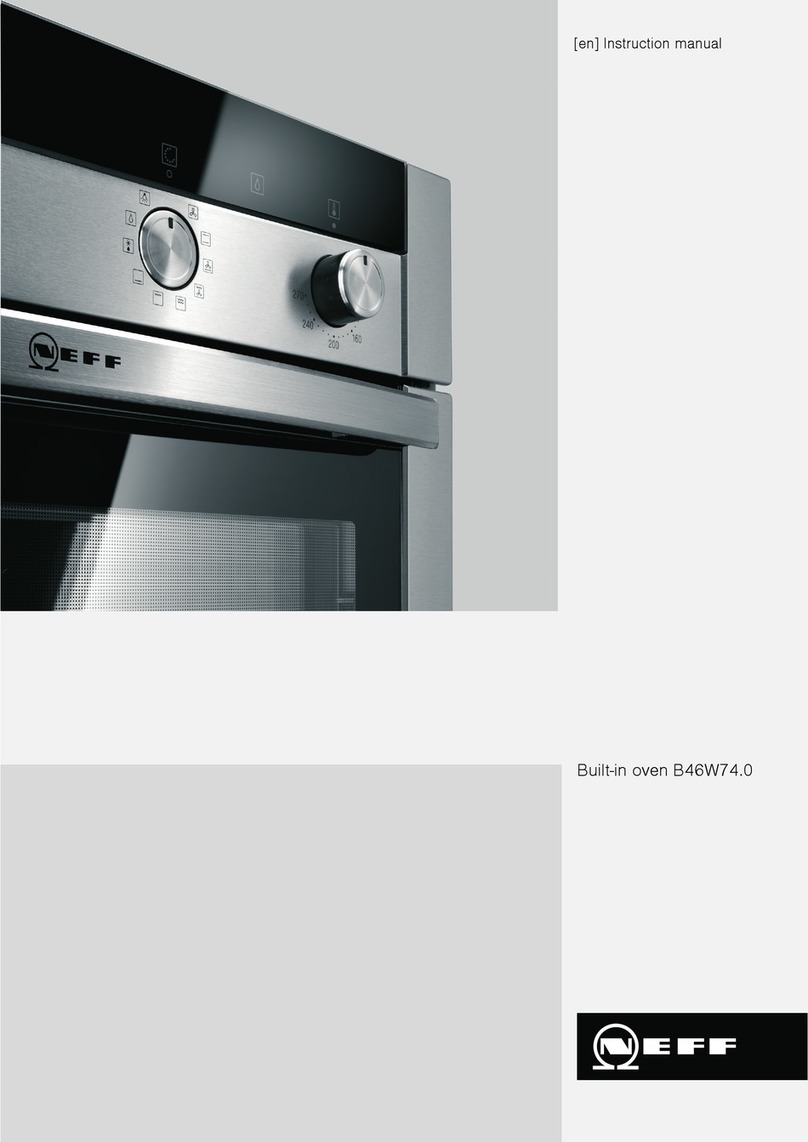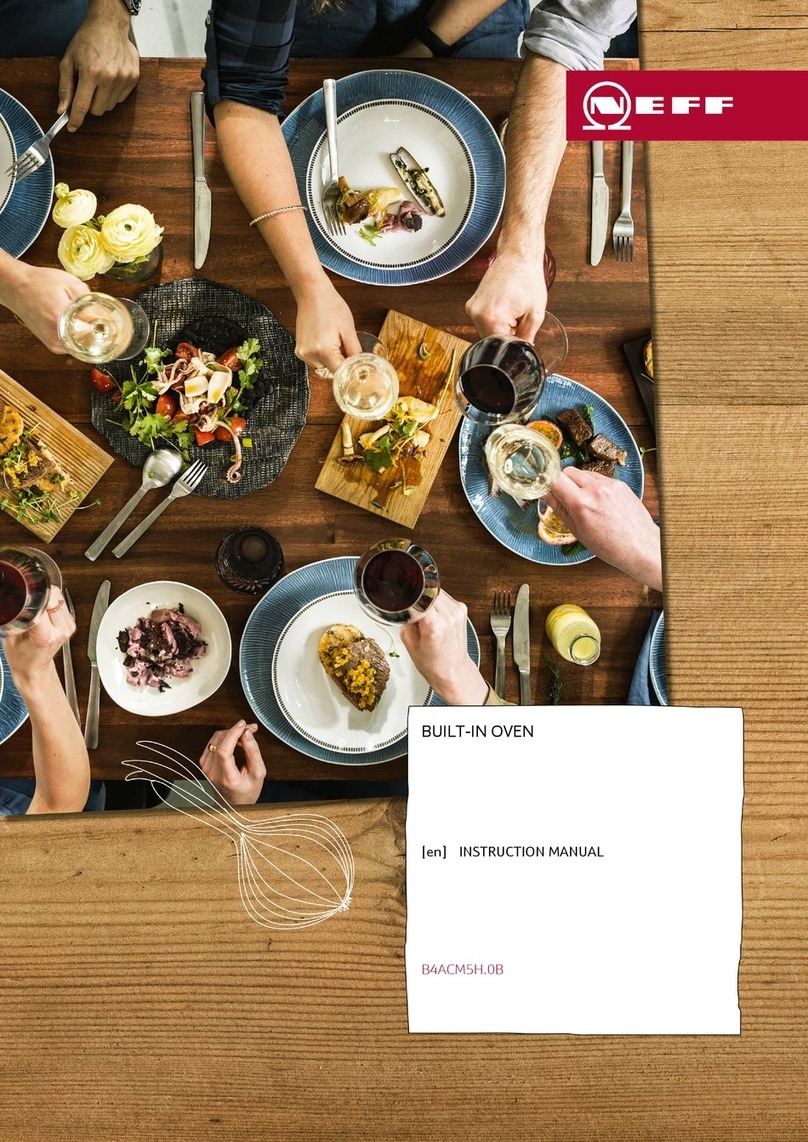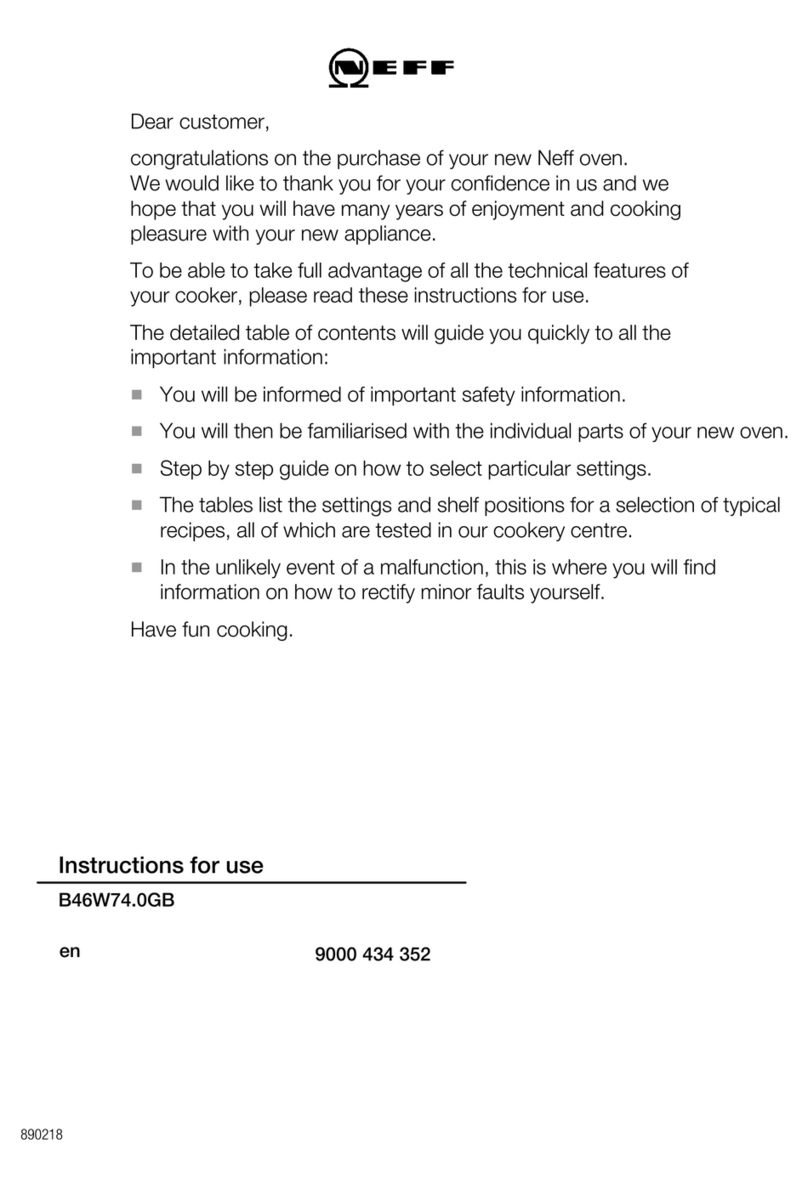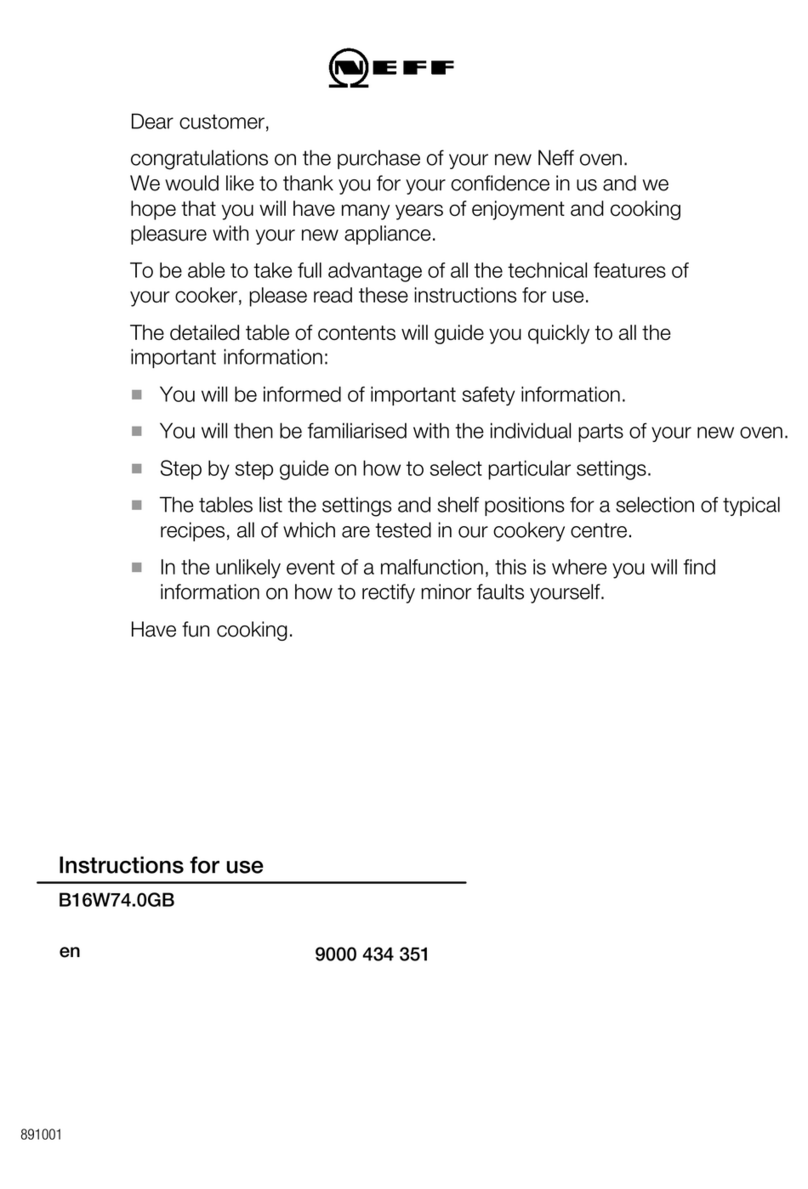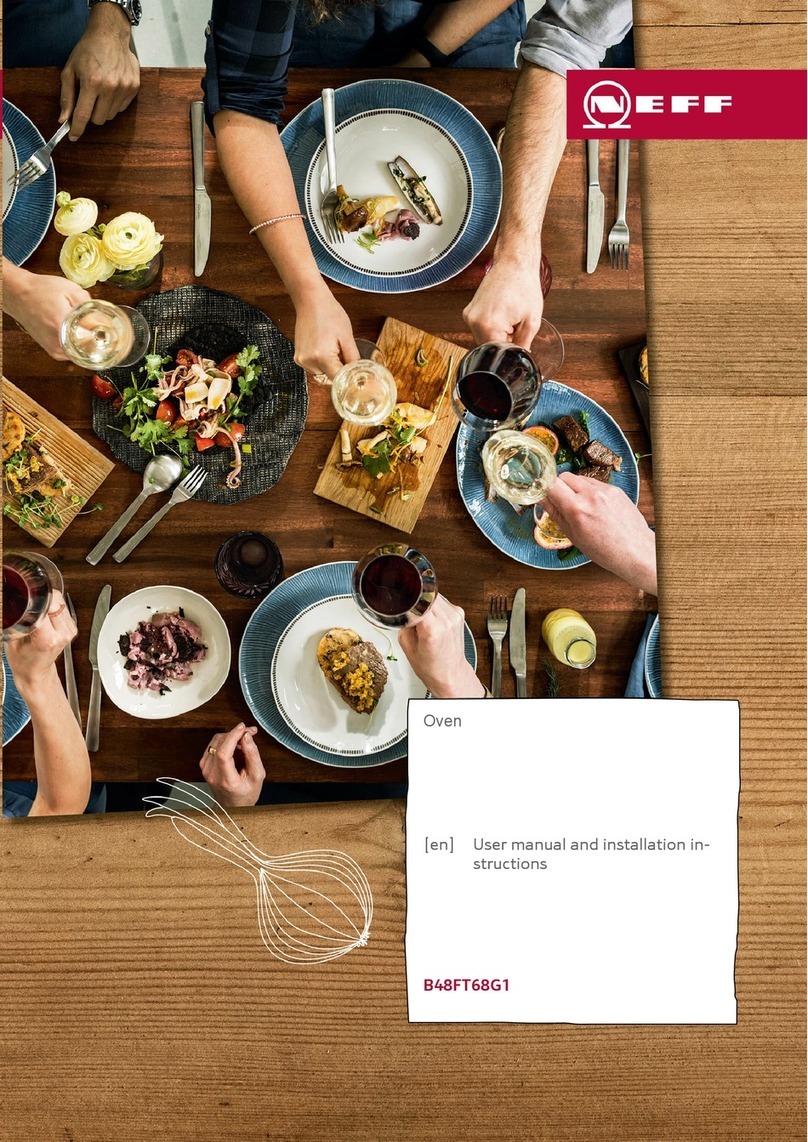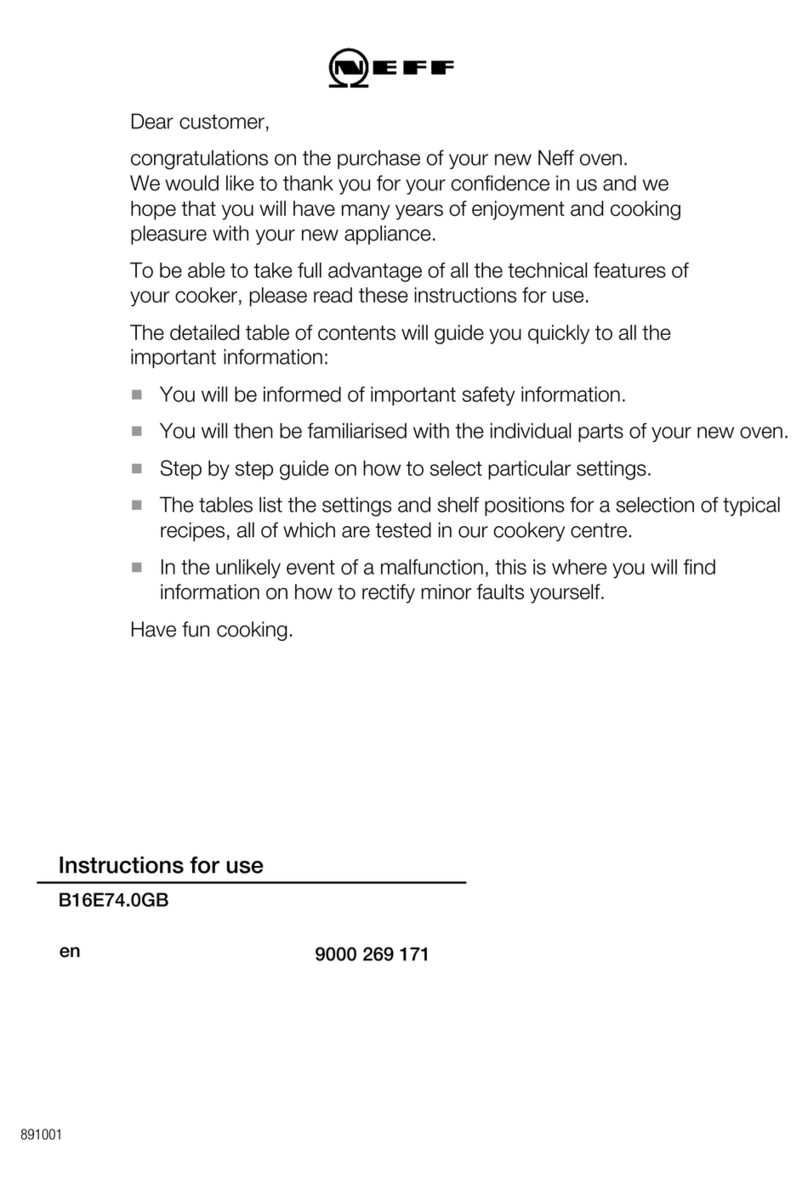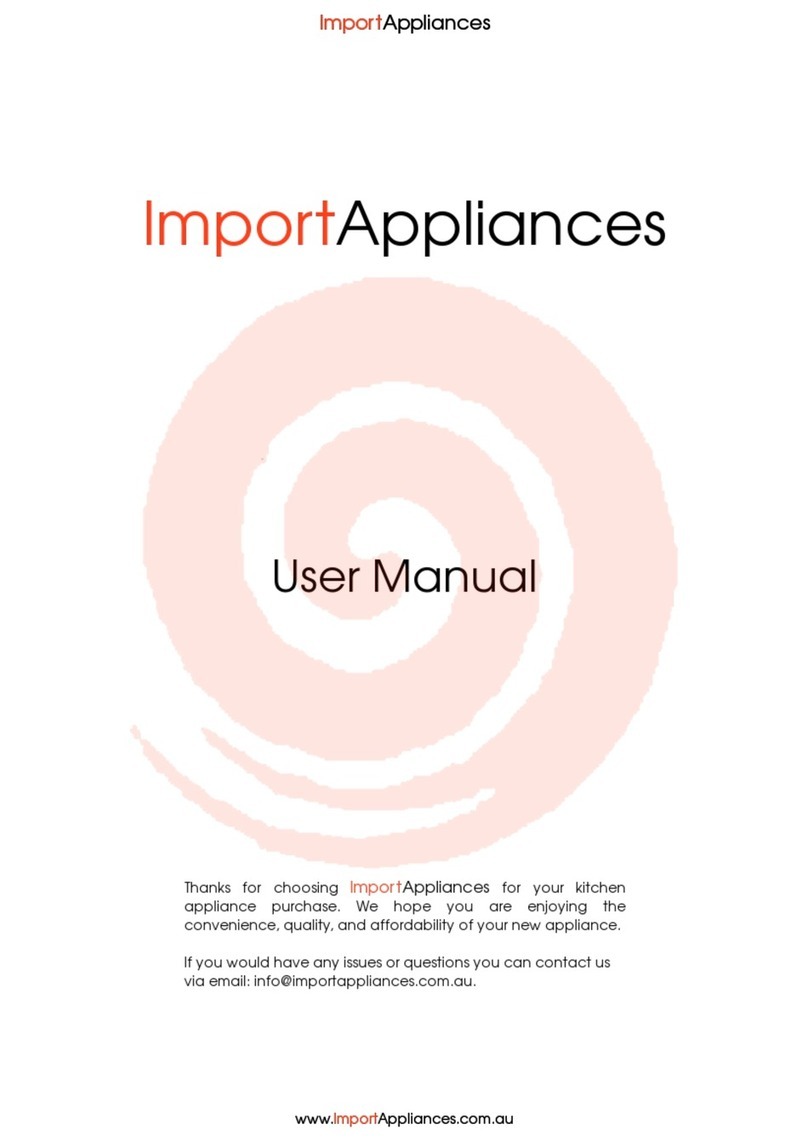
Safety en
3
▶Before using the appliance, remove the
worst of the food residues and remnants
from the cooking compartment, heating ele-
ments and accessories.
Opening the appliance door creates a
draught. Greaseproof paper may come into
contact with the heating element and catch
fire.
▶Do not place greaseproof paper loosely
over accessories when preheating the ap-
pliance.
▶Always use a plate or baking tin to hold
greaseproof paper down.
▶Do not use more greaseproof paper than is
necessary.
▶Greaseproof paper must not extend over
the edge of accessories.
WARNING‒Risk of burns!
The appliance gets very hot.
▶Never touch the inside surfaces of the
cooking compartment or the heating ele-
ments while they are hot.
▶Always allow the appliance to cool down.
▶Keep children at a safe distance.
Accessories and cookware get very hot.
▶Always use oven gloves to remove ac-
cessories or cookware from the cooking
compartment.
When the cooking compartment is hot, any al-
coholic vapours inside may catch fire.
▶Never prepare food containing large quant-
ities of liquid with a high alcohol content.
▶Only use liquid with a high alcohol content
in small quantities.
▶Open the appliance door carefully.
WARNING‒Risk of scalding!
The accessible parts of the appliance become
hot during operation.
▶Never touch these hot parts.
▶Keep children at a safe distance.
Hot steam may escape when you open the
appliance door. Whether or not you can see
steam depends on its temperature.
▶Do not stand too close to the appliance
when opening the door.
▶Open the appliance door carefully.
▶Keep children at a safe distance.
If there is water in the cooking compartment
when it is hot, this may create hot steam.
▶Never pour water into the cooking compart-
ment when the cooking compartment is
hot.
WARNING‒Risk of injury!
Scratched glass in the appliance door may
develop into a crack.
▶Do not use glass scrapers, sharp or abras-
ive cleaning aids, or harsh cleaning
products.
The hinges on the appliance door move when
the door is opened and closed, which could
trap your fingers.
▶Keep your hands away from the hinges.
Components inside the appliance door may
have sharp edges.
▶Wear protective gloves.
WARNING‒Risk of electric shock!
Incorrect repairs are dangerous.
▶Repairs to the appliance should only be
carried out by trained specialist staff.
▶Only use genuine spare parts when repair-
ing the appliance.
▶If the power cord of this appliance is dam-
aged, it must be replaced by trained spe-
cialist staff.
If the insulation of the power cord is dam-
aged, this is dangerous.
▶Never let the power cord come into contact
with hot appliance parts or heat sources.
▶Never let the power cord come into contact
with sharp points or edges.
▶Never kink, crush or modify the power
cord.
An ingress of moisture can cause an electric
shock.
▶Do not use steam- or high-pressure clean-
ers to clean the appliance.
If the appliance or the power cord is dam-
aged, this is dangerous.
▶Never operate a damaged appliance.
▶Never operate an appliance with a cracked
or fractured surface.
▶Never pull on the power cord to unplug the
appliance. Always unplug the appliance at
the mains.
▶If the appliance or the power cord is dam-
aged, immediately unplug the power cord
or switch off the fuse in the fuse box.
▶Call Customer Service. →Page25
▶Repairs to the appliance should only be
carried out by trained specialist staff.
